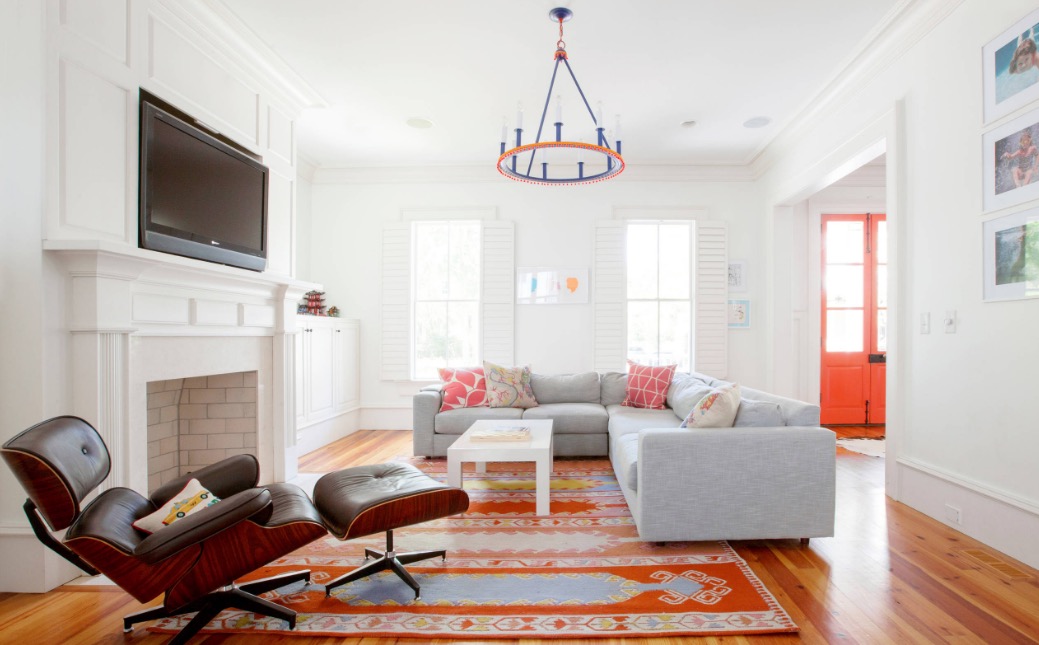
28 Aug These Are the Top Color Mistakes That Everyone Makes (And How to Fix Them)
If we’re being honest, there’s much more to choosing and mixing colorings than converges the eye. There are so many different colors and colors, it’s no speculate that sometimes people gaffe and pick the erroneous one. That said, there are a few common emblazon corrects that designers understand over and over again.
Keep reading to see what they are. If you’ve made one of the error below, it’s okay. You’re unquestionably not alone in it and we’ve required easy lodges for each one. Formerly you follow their recommendations, the chambers in your home will appear more effective and brighter than ever before.

Don’t forget to check how light-colored will affect the shadow. Idol: Rikki Snyder
Not considering light
Believe it or not, lighting has a huge impact on the way a color searches and feels in a office. If you don’t consider how a room’s lighting wields with a coloring that you picked, there’s a good chance that you could be brought to an end lives with a very different canopy than you originally intended.
Fixing this mistake is all about prep creation. Before you choose a decorate colour- or any type of complexion, for that are important- get some samples. Then, situate the tests in various recess of the area and watch how the glowing alters them throughout the day.
You may notice that the emblazon proving to be lighter, darker, or have different undercurrents than you originally intended. At that top, though, it’s much easier to swap out your sample hue for another option than to remake the whole office from scratch.

Always follow the 10/30/ 60 regulate. Epitome: Margaret Wright Photography
Forgetting about balance
When dealing with multiple complexions in a office, detecting the proper balance between them is key. There’s a place for fearless colors to stand out and there’s a place for neutral hues to provide an opportunity for the eye to residual. However, if you have too much of either one, “youre running” the risk of the room growing either extremely overstimulating or extremely boring. It’s up to you to find the middle ground.
Luckily, there is an easy ruse enabling you to. It’s called the 10/30/ 60 principle. This rule dictates what percentage of the room should be taken up by each color in your color scheme. The first 60% is your cornerstone colouring and usually a neutral colour. The next 30% is your secondary colouring, or a middle ground, and the final 10% is your accent pigment, which is the boldest shade.

Consider the house as a whole rather than designing room-by-room. Idol: Susan Jablon Mosaics
Designing each chamber separately
At first, it may seem to make sense to decorate each apartment in your residence as its own disconnected entity. After all, each office has its own individual abuses, right? However, it’s actually a much better idea to think of your residence- or at least every level- as one cohesive cell and labour your scheme with harmony in mind.
If you’ve ever wondered why framework homes and professionally-designed seats ever seem so put together, it’s because of cohesion. Every office in those openings shares a similar color palette. As a outcome, they all spurt together seamlessly.
You can do the same thing in your own home. Start by doing the very best made to ensure that each office works in harmony with the ones adjacent to it. Then, when you’re ready to make things to the next stage, consider going for one cohesive look throughout the entire space.

Remember to include some distinguish so the regard isn’t too matchy-matchy. Epitome: Catherine& McClure Interior
Foregoing contrast
That said, you also don’t want to go too far in the other direction and have the offices in your dwelling become too “matchy-matchy.” When the dyes you use are too same to one another, the room flows the risk of becoming bearing to the eye. In this case, everything starts to blend together and nothing of the specific characteristics constituents certainly stand out.
Luckily, if this is your coloring blunder, it’s an easy correct. Simply lend some contrast to give the office a little more visual concern. You can do this in various directions. Try supplementing an eye-catching accent hue through the room’s accessories or hurl a forceful photograph or pattern into the mix.
The post These Are the Top Color Mistakes That Everyone Makes( And How to Deposit Them ) showed firstly on Freshome.com.
Read more: feedproxy.google.com

